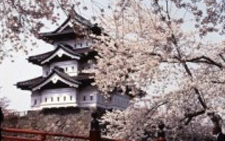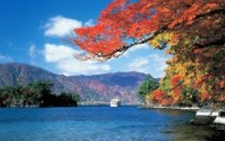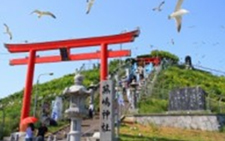Culture & Tourism
Natural View

Hirosaki Castle Remains (Hirosaki Park)
Hirosaki Park, covering an area of 49 ha, is where the 2nd lord of Tsugaru, Tsugaru Nobuhira built a castle in 1611. After 380 years, the castle tower, 3 turrets, 5 gates and Mie dike still remain and are designated as national important cultural properties. The park is also well known for cherry blossoms. Towards the end of April, about 2,600 Yoshino and double cherry blossom trees come to full bloom.
In fall, the leaves of about 1,000 maple trees turn to autumn tints with the green background of the old castle. Large, middle and cascade chrysanthemums, as well as chrysanthemum dolls, considered the finest in the Kita-Ouu area, color the ground and fill the area with a sweet aroma.
At the beginning of February, the Snow Lantern Festival takes place, a festival now considered one of the 5 grand snow festival events in the Michinoku area.
- Address : 1 Shimoshiregane-cho, Hirosaki City 036-8356
- Transportation :
- Approx. 25 min. walk from JR Hirosaki Station
- Take the 100-yen bus from the Konan Bus stop in front of the JR Hirosaki Station and get off at Shiyakusho-mae Koen Iriguchi (approx. 15 min. ride)

Lake Towada
Lake Towada, extending over Aomori and Akita prefectures, formed approximately 2,000 years ago as a result of volcanic activity that created a mortar-shaped depression where water accumulated, a typical double caldera formation. The name Lake Towada came from the Ainu language word "to-warata" "to" meaning lake and "warata" meaning rock. The lake is the 12th largest and 3rd deepest in Japan.

The Black-Tailed Gulls of Kabushima
Kabushima Island, designated as a prefecutural park, is famous as a breeding area for black-tailed gulls, a protected species. Every year about the middle of March, tens of thousands of black-tailed gulls arrive from the south to lay eggs. When the turnips start to bloom in April the eggs hatch, and at the end of summer when the baby birds have grown strong enough to fly, they leave for the south.
- Transportation : Approx. 5 min. walk from JR Same Station
